If you caught Scott Brady’s recent article, you’d know that overlanding is officially in at Outdoor Retailer. It’s hip, it’s hot, and it was happening across every corner of the show. From Series Land Rovers to Earth Cruisers, vehicles of every kind were being embraced by brands to showcase their products in a new and adventurous way, but it wasn’t all fluff. These manufacturers were unveiling plenty of gear that was right up our alley, which is why we decided to throw together this article to give you a look at the newest and coolest overland kit our team spotted throughout the week. For larger items like tents and vehicles, check out Scott’s article here.
Yakima LockNLoad Rack and Double Haul Rod Carrier
I’m ashamed to say that five years ago I probably wouldn’t have paid a lot of attention to a new Yakima rack. For some reason, memories of light-duty crossbars on a friend’s minivan stuck with me like a stubborn piece of gum to a shoe, but with Yakima’s latest release, I’m happy to say those days are firmly behind me. That’s because this rack, which they call the LockNLoad, isn’t just well thought out and easy to use, but attractive and rugged to boot. Here’s a look at the basics.




The platform is made from powder-coated aluminum and according to their engineers, carries a dynamic load rating between 165 pounds and 440 pounds. In other words, the limiting factor is the load rating of your roof, not the rack. It attaches via Yakima’s proprietary clamp mounting system which we have come to adore for its simplicity and ease of use.



I was stoked to see the attention to detail on features like the rubber seal in the front, rear, and side rail slots, which allow accessories to slide into place while still filling the gaps to prevent wind noise. I also liked that the crossbars allow customers to mount accessories running side to side or front to back, which opens up compatibility with a much wider range of products. Speaking of accessories, the LockNLoad will launch with a way to mount a boat load of them. They’ll have mounts for everything from Hi-Lift jacks and jerry cans to bikes and snowboards, but my personal favorite is their new fly rod case which they’re calling the DoubleHaul.

This system is designed for those who want to leave their fly rods fully strung for fast and easy access on the go. It accommodates up to four 10-foot rods at a time with reels up to size 12, or longer rods by breaking them down into two pieces. If you have a smaller vehicle, the DoubleHaul can be used in a half-length format as well, giving your vehicle a cleaner profile and reducing overhang.



The aluminum tubes keep the product lightweight, and plastic liners inside prevent damage during transit down bumpy roads. Reels are protected with felt padding and rest sideways against the cushion to prevent them from hanging on the rods and bouncing when off road. Once all of your gear is inside, everything is secured with one of Yakima’s integrated SKS locks.
The LockNLoad roof rack will be available in six different sizes varying in width and length, with MSRPs ranging from $699 to $949.
The DoubleHaul retails for $699.
Sea to Summit Water Cell X and ST
One of my favorite products of the show was Sea to Summit’s water cell. This versatile piece of gear is available in sizes ranging from 4L to 20L (5.2 gallons) and can be used as a shower, hydration pack, or gravity-fed faucet. While the basic concept is far from new, their execution is top notch, and its features make it a perfect solution for outdoor enthusiasts and overlanders of all kinds. Here’s what we like.


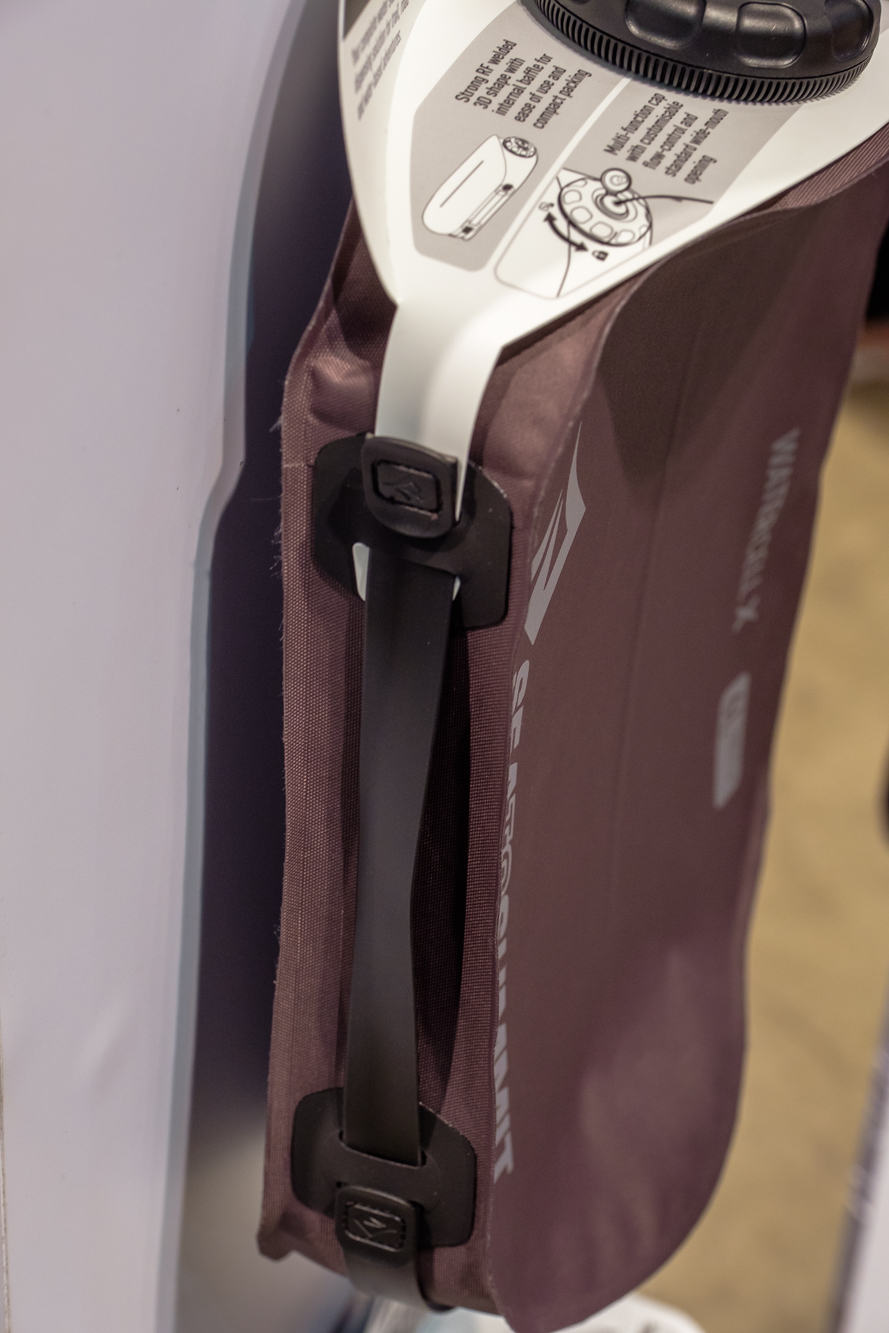

Starting with the basic shape, Sea to Summit designed the BPA free cells to sit upright or lay flat without rolling around. This not only makes them easier to use, but easier to store in vehicles, backpacks, or panniers. Streamlined grab handles double as lashing points to secure the cells, and the thermoplastic polyurethane (TPU) base with RF-welded seams will take a beating before any risk of puncture comes into play. This is especially true of the Water Cell X, which uses a more durable exterior coating to stand up to backcountry travel. Convenient hook points make the cells easy to hang or handle, and a multi-function cap provides standard or wide-mouth access, as well as flow control of the water.
Prices are set to range between $30 and $65, with expected release dates in spring of next year.

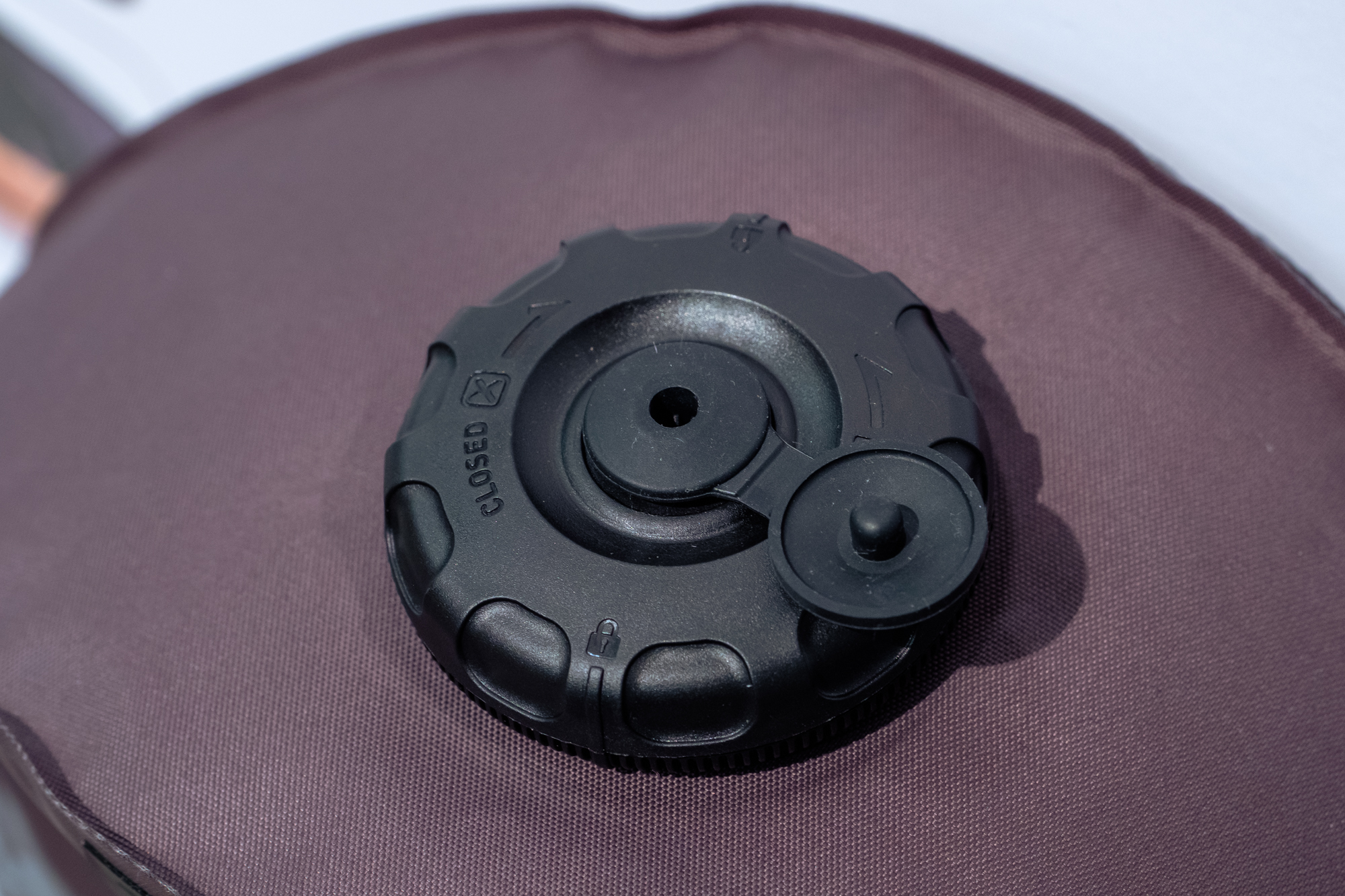
GSI’s 1.4-inch thick Pinnacle Pro Stove
If you’re going to claim to have the thinnest dual burner camp stove on the market, you better be ready to innovate, and GSI has certainly done that with their Pinnacle Pro. Despite boasting two 11,000 BTU burners, the Pro measures just 1.4 inches thick, and places the gas canisters away from the burners for safety instead of underneath the stove where they can get hot. Heavy-duty rubber wrapped knobs with push-button ignitions are as satisfying to use as they are intuitive, and operate as I would expect from a stove which costs twice as much as the Pro.
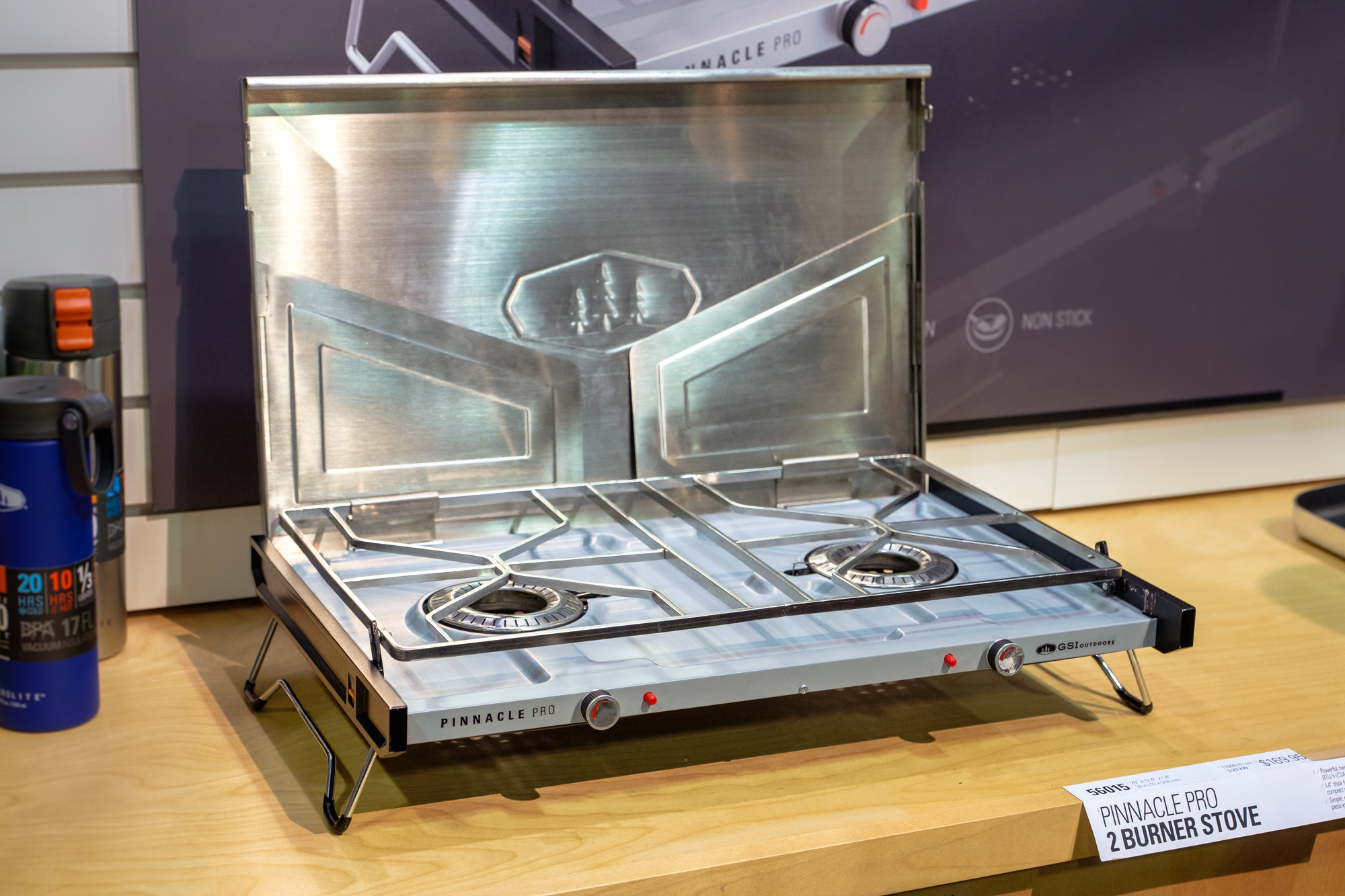



The quality of this product was surprising on all fronts. It didn’t bend or bow under pressure, the components didn’t rattle or feel cheap, and the entire package had a heft to it that somehow just felt right. Of course, this display model was still a prototype, and it will undergo a few tweaks and changes to provide smoother operation and avoid rubbing. (You’ll see some scuffed paint in the photos).
Official pricing has yet to be released but is rumored to be less than $200.

Exped MegaMat Max and Deep Sleep
Another exciting announcement came from Exped, which we all know from their now famous MegaMat. The big news at this show was their expansion of the MegaMat line in two directions, a thinner and more affordable option called the Deep Sleep, and an absurdly comfortable luxury option called the MegaMat Max.
The Deep Sleep measures in at 3 inches thick, but with a different foam structure, it feels nearly as plush as the full-size Mega Mat. Like the other two pads in the lineup, it self-inflates quickly and sports a soft but durable fabric cover. Vertical sidewalls give you the ability to sleep edge to edge, and on the two-person variants, I found there was very little transfer of movement from one side to the other. The real selling point though is that the Deep Sleep offers big comfort with a little price tag, $279 as opposed to $389 in duo form, which places it within reach of a much larger percentage of consumers.


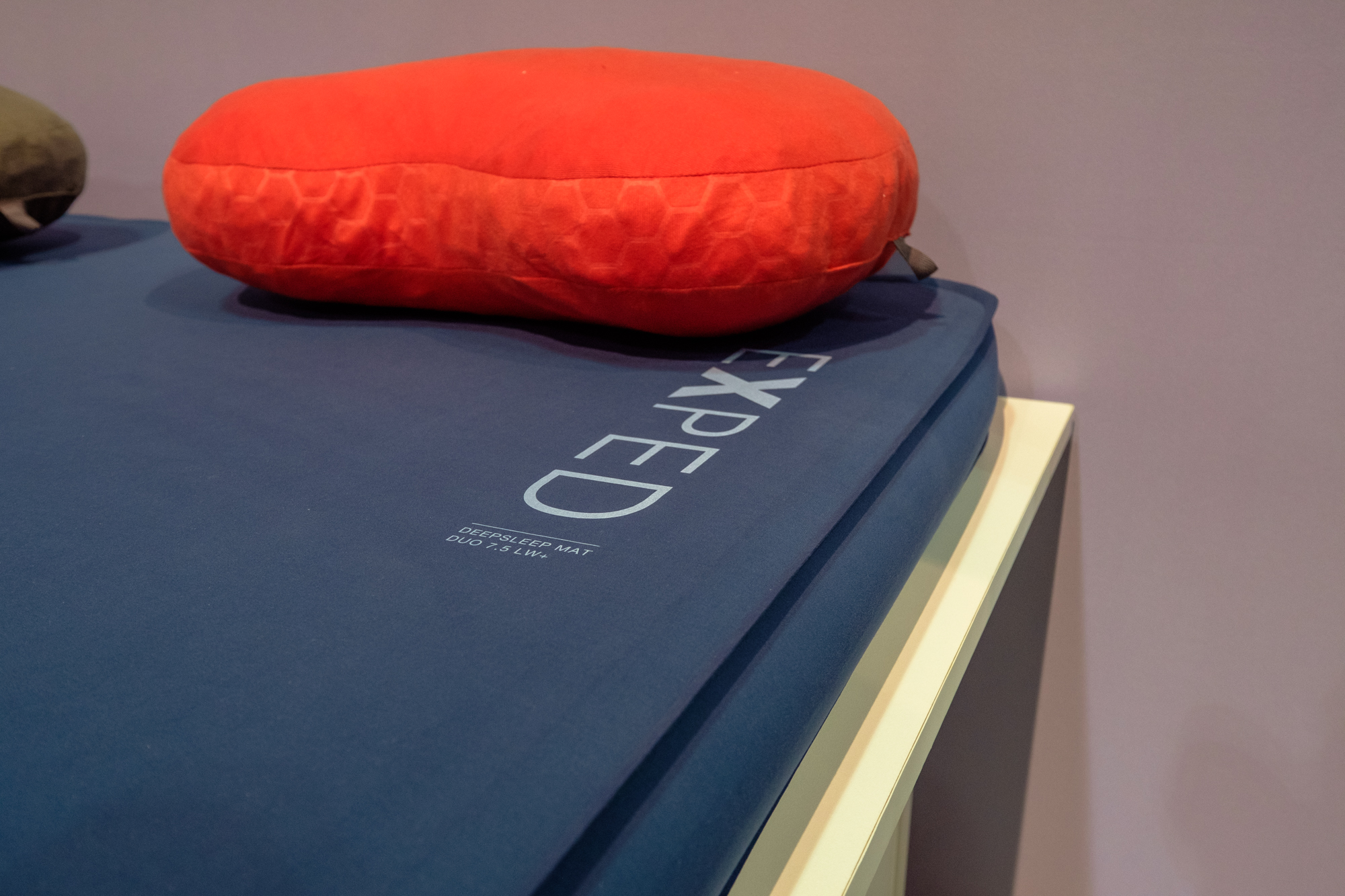
On the opposite end of the spectrum, Exped now has the MegaMat Max, which it describes with the words “unapologetic luxury,” a fitting combo. At 6 inches thick, I can only say that the comfort was nearly unbelievable and certainly better than the mattress in my Airstream back home. It uses a stretch tricot top fabric and abundance of self-inflating air-core foam to give buyers a choice between a firm yet supportive sleep experience, or a soft and cradling one. For folks who enjoy very soft mattresses, this is a game-changer, because even with the pad deflated far further than I would ever need I could still lay on my side without bottoming out. Oh, and if you’re worried about space, you’ll be pleased to know that the Max still packs away into a very reasonable size.
Pricing on the Max is set to release at $299 for single, and $429 for duo.



Peak Designs Travel Tripod
Peak Designs has a reputation for shaking things up in the industry. From packs to straps they manage to find clever and creative ways to solve problems which have been irking photographers for decades, and now they’ve managed to solve another with the travel tripod. This brilliant piece of gear eliminates nearly all of the wasted space found in traditional tripods by using angled legs which fit together likes pieces of a puzzle. This reduces the negative space usually located between each leg and allows the tripod to be thinner than ever without losing features. Just how much thinner? Peak Designs claims that when placed head to head with an equivalent tripod, theirs will pack down to half the size. After seeing it in person, I can say two things for sure: they’re not lying, and I will definitely be buying one.
Retail price is set to $349 for the aluminum model, and $599 for the carbon fiber, however, they can be purchased on Kickstarter right now for $289 and $479 respectively.

Fjällräven Clothing and Packs
When it comes to clothing at Outdoor Retailer, it’s easy to get lost in a sea of new features and trends, but Fjällräven always seems to stand out with a unique blend of heritage and innovation. This year I found myself drawn to a myriad of products, from their Kaipak Jacket to their Abisko trousers, but two backpacks in particulate caught my eye, the Stubben and the Ulvö 30.


The Ulvö is new for this year, and caters towards travelers and hikers who need a large daypack or want more space in their carry-on to separate personal and work items. This 30L pack is made from Fjällräven’s waterproof Bergshell fabric and features a 15-inch padded laptop sleeve, a zippered lid compartment, two internal zippered mesh pockets, and a large main compartment with a storage divider. On the exterior, you’ll find two stretchable side pockets and a chest strap with one-handed hook, as well as a ventilated back and shoulder straps for all-day comfort even in hot conditions.



The Stubben, which translates to stump, is an older pack but one we still love. It’s perfect for day trips or a travel pack and utilizes an internal frame system to not only protect your gear but serve as a stool to sit on. No need to carry a chair! I love the multiple access points, convenient straps, and the G1000 fabric construction which can be waxed for improved water resistance.
Pricing on the Stubben is set to $250.

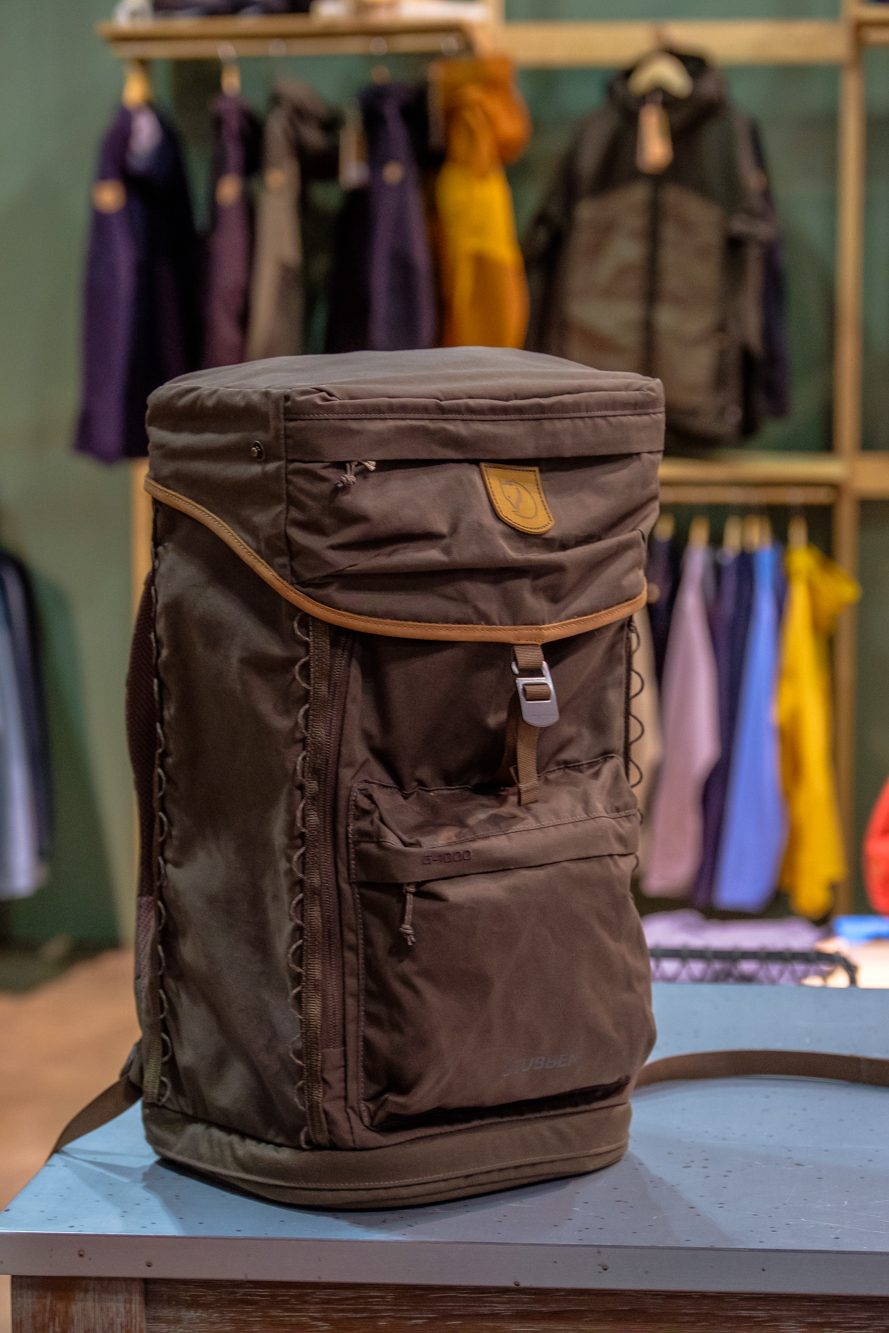



Primus Fire Stick
One of the hot ticket, and indeed, award-winning items from Outdoor Retailer 2019 was Primus’ Firestick. This simple yet brilliant little stove utilizes its cylindrical-shaped armatures to simultaneously block wind and support pots and pans, meaning it’s more effective while taking up less space. The regulator can be controlled from a trickle of a flame up to a full 8,500 BTU burn. It comes with a piezo igniter and a soft case to keep it safe while preventing it from damaging other items in your kit. The Fire Stick will be available in titanium (3.1oz) and steel (3.7oz) versions and is priced at $120 and $90 respectively.



Benchmade 380 Aller – International Travel Knife
Knives are extremely useful tools, but traveling abroad with one can be a tricky business. Every country has its own regulations on blade length, features, opening mechanisms, and more. Some countries even prevent you from carrying a knife unless it serves a particular purpose for your stay. This convoluted nightmare is why Benchmade partnered with French knife maker Patrick Famin to create a blade specifically designed for travel, the 380 Aller.



Although this knife is low profile and easy to carry, it manages to count as a multi-tool because it incorporates a screwdriver, pry tip, micro bit slot, money clip, and a bottle opener all in one. There’s still plenty of edge for most tasks, and it meets the regulations in nearly all foreign countries, so you won’t have to worry about whether or not you’re legal once you get to your destination.
Pricing is set at $160, and you can learn more about it here.
Rumpl Nanoloft Puffy and Van Inspired Patterns
It seems like Rumpl always has something new up their sleeve when it comes to these shows, and this year was no exception. Strolling by their booth, several new additions caught my eye, but I wanted to talk about two in particular. The first is a Nanoloft puffy, which will be available in single and double sizes. This new blanket is filled a proprietary 100 percent recycled synthetic down fill, giving it almost all of the warmth and weight advantages of real down, but without the rather painful price tag. It has a DWR coating, is machine washable, and weighs 1.8 pounds. Basically, it’s almost all of the performance, at a fraction of the price.

The other thing I had to talk about was an entirely new collection of Rumpl products which I can only describe with words like rad, wicked, and outta sight, because they’re inspired by the legendary vans of the 70s and 80s. Those brightly colored dream machines defined an era, and their oranges, browns, blues, and whites live on in these retro patterns and designs. Love might be a strong word to use for a blanket, but I don’t really care. I love these things.

Beyond Clothing
It’s no secret that layering is key for travel and outdoor clothing, but understanding which layers to use and what their cumulative temperatures ratings are can be a bit of a challenge. That is, of course, unless you’re talking about Beyond Clothing. They develop their garments not as independent items, but as pieces of a larger system which can be paired in different combinations for optimum performance in the snow, rain, heat, or cold. Just look at their chart below, and you’ll get an idea of what I mean.

Customers can compare the temperature range at the top, with whether or not they’ll be static or active, and then match it to the recommended layers beneath it. This makes it easy to suit up for whatever conditions you’ll be encountering. Oh, and if those conditions happen to include a bar or restaurant along the way, don’t worry, because Beyond’s clean lines and muted colors will look right at home.







Looks aren’t everything, which is why you’ll find all sorts of great performance aspects in Beyond’s clothing. For example, on the base layer, you’ll see below the internal fabric is structured with a raised pattern to promote airflow between the jacket and your skin, helping to regulate your body temperature on the move. Another shell is designed with photographers in mind and includes two oversized pockets lined with microfiber for lenses and internal mesh pockets for SD cards and two batteries.
To learn more, check out their website here.





